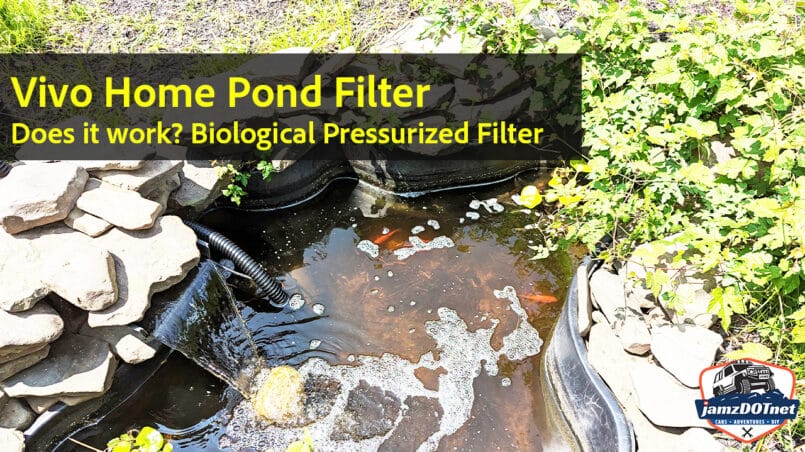Hey, it’s Jason! Years ago I installed a small garden pond at our house with the primary goal to provide a constant water source for the backyard honeybees. I’ve never been able to keep it clean using the sponge filter in the pond. This year, I wanted to be able to see the goldfish in it! Follow along as I try this Vivo Home Pressurized Biological Pond Filter on my small backyard garden pond.
Buy it here: https://amzn.to/3P7675Y
A small garden pond with goldfish can be a beautiful and relaxing addition to your outdoor space. Here’s some information to help you create and maintain such a pond:
Pond Design: Start by selecting a suitable location for your pond. Choose an area with partial shade to protect the goldfish from excessive sunlight. Determine the size and shape of the pond based on the available space and your preferences. A depth of at least 2 feet (60 cm) is recommended to provide enough room for the goldfish and to prevent freezing in colder climates.
Pond Construction: You can either dig the pond yourself or use a pre-formed pond liner. If you’re digging the pond, ensure that the walls are gently sloped to allow easy access for the goldfish. Use a pond liner to prevent water leakage. Install a water pump and filter system to keep the water clean and oxygenated.
Water Circulation and Filtration: Goldfish ponds require proper water circulation and filtration systems to maintain water quality. A pump will help circulate the water, preventing stagnation and providing oxygenation. Install a biological filter to remove impurities and maintain a healthy environment for the goldfish.
Pond Plants: Incorporating aquatic plants in your pond helps provide shade, oxygenation, and natural filtration. Floating plants like water lilies and lotus can add beauty and cover for the goldfish. Submerged plants, such as anacharis or hornwort, help oxygenate the water. Marginal plants like water iris or water mint add visual interest to the pond’s edges.
Goldfish Selection: When choosing goldfish for your pond, consider the size of the pond and the climate in your area. Common goldfish and comet goldfish are hardy and can adapt to various conditions. Shubunkin goldfish, with their multicolored and speckled patterns, are also popular choices. Avoid fancy or delicate varieties, as they may be more prone to health issues in an outdoor pond.
Feeding and Care: Goldfish are omnivorous and will eat a variety of foods. Offer them a balanced diet of high-quality fish pellets, flakes, or specially formulated goldfish food. Feed them small portions several times a day to prevent overfeeding, which can lead to poor water quality. Also, remove any uneaten food after a few minutes to avoid polluting the pond.
Water Maintenance: Regular maintenance is essential to keep the pond healthy. Monitor the water quality parameters like pH, ammonia, and nitrate levels. Perform water changes as needed to maintain good water quality. Remove any debris or fallen leaves from the pond to prevent them from decomposing and affecting the water quality.
Winter Preparation: In colder climates, it’s important to prepare your goldfish pond for winter. Stop feeding the goldfish once the water temperature drops below 50°F (10°C) as their digestive system slows down. Install a pond heater or use a floating de-icer to prevent the pond from completely freezing over, which can harm the fish. Provide a sheltered area, like a deep section of the pond, where the goldfish can hibernate.
Remember to research and follow local regulations and guidelines regarding the construction and keeping of ponds and fish in your area. Enjoy the serene beauty of your small garden pond with the lively and colorful goldfish swimming gracefully through the water.



